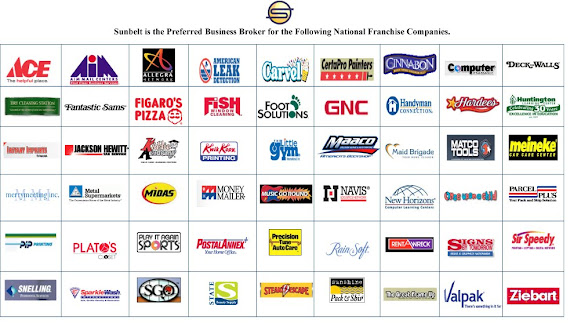The Small Business Administration has been a key player through the financial crisis. But many loan officers say small-business owners don't understand exactly how the agency's programs work—and that can hurt them when it comes time for a loan.
Here are some popular myths about the SBA, along with reality checks.
It's common to hear the SBA described as a "lender of last resort." In some ways, there's good reason for this: The agency's Office of Disaster Assistance speeds funds to borrowers in regions hammered by natural disasters, and it funds Community Development Financial Institutions that make loans to borrowers with higher-risk profiles.
But the SBA's bread and butter is facilitating loans to viable businesses. "Do businesses need to be distressed to participate in our programs? The answer is no," says Steve Smits, associate administrator for the agency's Office of Capital Access. In 2008, during the height of the financial crisis, the SBA facilitated loans to nearly 70,000 businesses—and Mr. Smits says most of them would normally have been eligible for conventional bank loans.
Borrowers often assume banks aren't taking any risks with SBA loans and don't understand why lenders would reject them. "Folks believe the funding for loans comes from the government, but it doesn't," says Erik Back, vice president at 1st Source Corp., a lender in South Bend, Ind.
Banks issue SBA loans according to government guidelines and receive some protection against losses if the borrower defaults. But "the guarantees are never 100%," Mr. Back says. Loans issued through the popular 7a program carry a guarantee between 75% and 85%, so the bank swallows up to 25% of any losses from the loan. By contrast, loans written through the SBA Express program—primarily for veterans and businesses in economically distressed areas—carry a 50% guarantee.
Click "HERE" to view entire article.
Helping You Buy or Sell a Business
HERBERT HOOVER
"Economic depression cannot be cured by legislative action or executive pronouncement. Economic wounds must be healed by the action of the cells of the economic body - the producers and consumers themselves."

Purchase a Business with Your 401k
Why? Because there are NO penalties, that’s right. This 401k Rollover program lets you use your 401k and other retirement funds to invest in a business – TAX AND PENALTY FREE. This is a safe, proven plan based on long standing provisions of the Internal Revenue Service (IRC § 6501). By using pre-tax retirement dollars to fund your business, you gain equity in your business and improve cash flow from day one. Use the funds to receive a salary during startup, while accelerating profitability by eliminating or reducing interest or debt. Application, creation, and funding is fast; typically (2-3 weeks or less). You can even set aside tax deductible retirement savings up to $200,000/yr. The benefits of using your 401k:-Minimize debt-Enhance cash flow-Stimulate business growth-Build equity-Take full advantage of tax benefits

- Indy Business Broker
- Noblesville, Indiana
- With over 16 years of business ownership, management and sales, Dave understands the needs of both buyers and sellers in confidential business transactions. As a former owner of a mortgage company, he also brings a unique perspective of the financing aspect of deal making. Since joining Sunbelt in 2004, Dave has represented a variety of companies in such industries as service, distribution and manufacturing. Dave has a reputation for successful transactions and consistently receives compliments from both buyers and sellers for his diligent work and adding tremendous value to the transaction process. In 2010, Dave successfully completed the necessary courses and requirements to be designated a Certified Mainstreet Business Broker (CMSBB). Dave’s education and experience includes: Indiana State University (Business Management), Indiana State (Securities Division) and Mortgage Brokers License (8 years). In his spare time, Dave and his family: Angela, Jayden (14) and Kade (12) enjoy family vacations and traveling, sporting activities and their local church. Contact Dave at 317.218.8626 or cell at 317.508.6690 dgorman@sunbeltindiana.com

Sunbelt Indiana Business Resource has been, and continues to be, the leading business brokerage in Indiana specializing in the marketing and sale of small and mid-size businesses. Consequently, our clients consider us more than business brokers. We serve as the business intermediary, strategist and advisor, giving us an objectivity that facilitates the entire transaction. As professional advisors, we maximize the market exposure of the business opportunity resulting in a mutually beneficial transaction for both seller and buyer. With more professional brokers on our staff than any other business brokerage in Indiana, the business is assured the maximum confidential exposure to the marketplace. In addition to our national presence through the Sunbelt Network, our extensive network of professional contacts among accountants, attorneys, bankers, venture and entrepreneurial sources also ensures that active buyers in the market are routinely, and in some cases exclusively, referred to us. Sunbelt Indiana Business Resource will provide business sellers a powerful set of solutions and services. In addition to traditional business brokerage, Sunbelt Indiana Business Resource will offer business valuation, equipment appraisal, new franchises, and hotel divestiture services. Buyers will be immediately exposed to in excess of 150 Indiana businesses available for acquisition, in excess of 10,000 businesses nationally, and over 50 franchisors looking to expand in Indiana.
We pledge to continue to provide the highest level of professional acquisition, divestiture, brokerage, and valuation services for Indiana's buyers and sellers.
We pledge to continue to provide the highest level of professional acquisition, divestiture, brokerage, and valuation services for Indiana's buyers and sellers.


Websites of Interest
Blog Stats
Available Franchises

